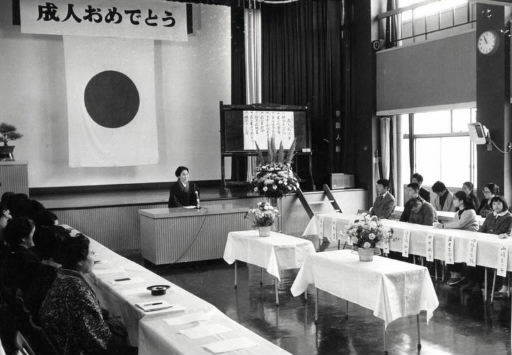A-bomb Microcephaly: The Lives of Patients, Part I [3]
Jun. 29, 2010
Far from Hiroshima, feelings of isolation
by Masaki Kadowaki, Staff Writer
When a woman is exposed to a high dose of radiation in the early stage of pregnancy, the baby's head can be abnormally small in size, resulting in mental and physical disabilities. The condition is known as A-bomb-caused microcephaly. The Ministry of Health, Labour and Welfare has granted official certification to 22 patients of this disease (as of the end of fiscal 2003). Many of the patients and their family members hoped to increase understanding of the condition, but at the same time, have felt fear of encountering prejudice and so wound up withdrawing to the margins of society. Sixty years have passed since the atomic bombing. [This series was originally published in July 2005.] Before the memories borne of that day fade, let us pass on the experiences of the bombing by tracing the personal history of one family affected by microcephaly.
In 1967, when the Japanese government recognized the correlation between microcephaly and prenatal exposure to radiation, the mother and her daughter were residents of Kitakyushu. The mother lived in a dormitory for employees of a local cleaning company. Her daughter, then 21, had just finished junior high school and started commuting to a kimono-making school in Shimonoseki, Yamaguchi Prefecture, by train.
The mother hid the fact that she had been exposed to the atomic bomb. Some prospective employers were reluctant to hire A-bomb survivors, saying, "They might die at any time." While trying to find a job, she felt a great deal of distress at this lack of understanding. She also kept her distance from relatives because she wanted to avoid troubling them about her daughter. For this reason, she chose not to live with her son, who had gotten married the year before.
It was not until 1974 that the mother and daughter came to learn the word "microcephaly." They read a newspaper article about a parent and child who were willing to expose themselves to society in order to make the insanity of nuclear weapons known to the world.
The mother was shocked by the fact that short-distance exposure to radiation in the early stage of pregnancy could cause mental and physical disabilities in the baby. She thought, "If I calculate back from my daughter's birthday, it might be true of her." She consulted the local health center and disabled veterans' association, but the reactions were simply: "Your daughter's condition seems to have been caused by malnutrition during pregnancy." Recalling this cold response, she said, "Hiroshima was far away and I felt a sense of isolation as an A-bomb survivor."
In 1986, the mother fell and broke her left leg. As a result, she was unable to walk without the use of a cane and was forced to quit her job at the dormitory. She contacted a group of A-bomb survivors in Hiroshima, which was mentioned in a newspaper article she kept about some survivors seeking witnesses to verify that they were exposed to the bombing. The group introduced her to a social worker in the medical field and, with this person's assistance, the woman's daughter was finally certified as a microcephalic patient in 1989. At that point, the daughter was 43 years old and her hair had become flecked with gray.
Soon after, the mother, almost 70 years old then, became hospitalized with a brain tumor. In her hospital bed, she felt anxious over the future. The daughter, who would not leave her bedside, had not gained professional-level skills in making kimono. And she could only make simple dishes like miso soup or omelets. Moreover, through the years her daughter had gone missing 19 times.
The mother thought, "I have to do something. If we move to Hiroshima, where people have more understanding of A-bomb survivors, then things will work out somehow."
In Hiroshima she located a group of microcephalic patients and their families called The Mushroom Club. One of the goals of the group, founded by the late author Tomoe Yamashiro and other journalists in 1965, was to assure life-long security for patients even after their parents' deaths.
"The children were born from under the mushroom cloud of the atomic bomb… Even if they grow in obscurity, we hope they will grow, both physically and spiritually, as strong as mushrooms." The group's charter reflects the ardent wishes of the patients' parents in wanting their children to live good lives, even after the parents have died. The mother and the daughter, who had lived in seclusion, came to find friends for the first time.
(Originally published on July 13, 2005)








